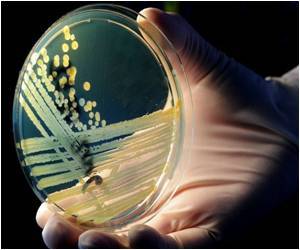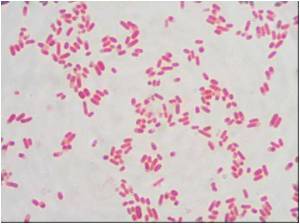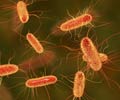Ten variants of the deadly Escherichia coli strain that hit Germany in May 2011 have been sequenced across the world.

The outbreak of E. coli O104:H4 resulted in a large number of cases of bloody diarrhoea and haemolytic uraemic syndrome (HUS) in Germany, and in 15 other countries in Europe and North America. The earliest studies suggested contaminated cucumbers were to blame. However by 10 June, raw beansprouts were identified as the source of infection. Over 4,000 cases and around 50 deaths have occurred so far across 16 countries in Europe and North America. The outbreak has also had a very high economic impact on the fresh vegetable market, especially in Spain and across Europe.
Crowd-sourcing researchers found that the outbreak strain is most closely related to a strain of E. coli originally isolated in Central Africa some years ago, which was responsible for cases of serious diarrhoea. "The E. coli O104:H4 outbreak strain has gained the ability to make a toxin from a bacterial virus source which has made it more dangerous," explained Dr Crossman.
The unprecedented global crowd-sourcing effort meant that in the very immediate term, doctors were able to distinguish this strain from others, said Dr Crossman. "Knowing which antibiotic resistance genes are carried by the strain, for example, can provide us with more insight into the source of the outbreak and help us avoid similar outbreaks occurring in the future," she said.
Institutions around the world have now isolated ten different variants of E. coli O104:H4. "These variants represent a tremendous resource to examine this bug in a new, rapid and exciting way. By studying the genetic factors involved in the survival of this bacterium on surfaces, we hope to get an angle on how this organism has been able to get a foothold in the global food chain," suggested Dr Crossman.
Advertisement










